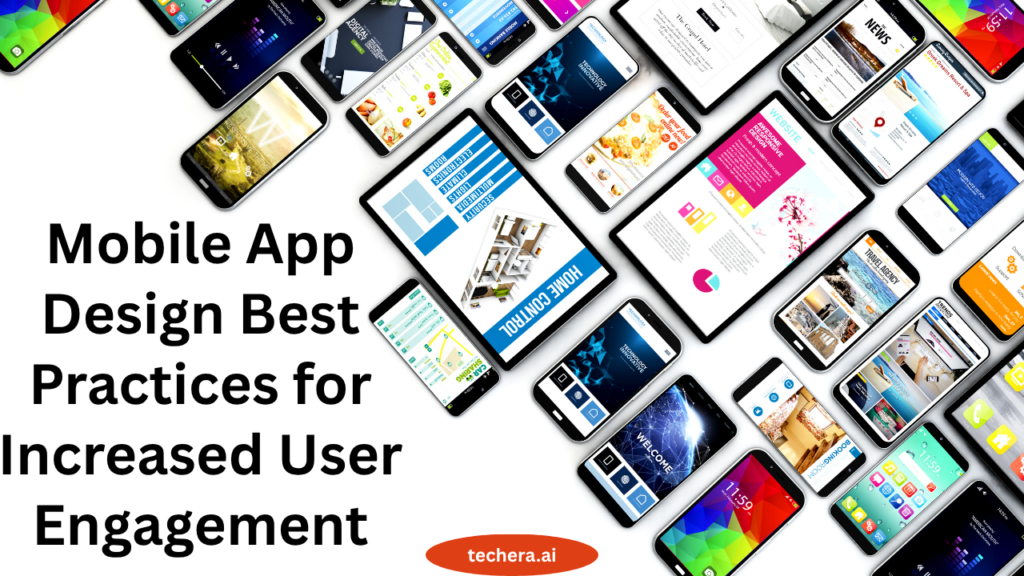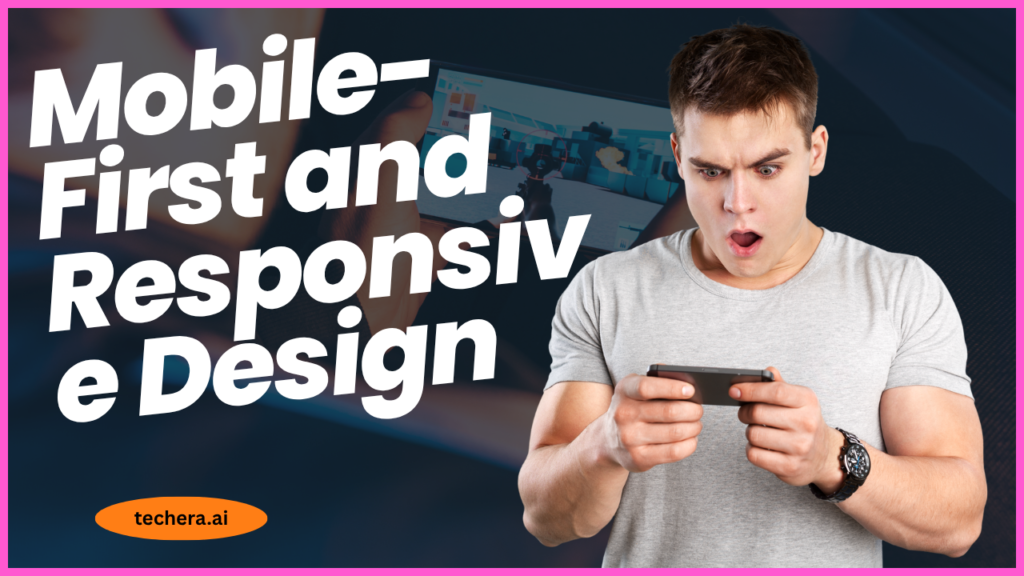
Discover key Mobile App Design best practices to enhance user engagement. From intuitive navigation to visually appealing interfaces, this post covers essential strategies to create user-centric apps that keep users coming back. Learn how thoughtful design choices can improve user experience and boost retention rates.
Introduction
Why Mobile App Design Matters Ever downloaded an app that looked cool, but deleted it five minutes later because it was just… frustrating? You’re not alone. In today’s app-heavy world, having a well mobile app design is essential rather than optional.
The Role of User Engagement in App Success
You can pour thousands into development and marketing, but if users aren’t sticking around or using your app regularly, it won’t take off. Engagement is the heartbeat of app success.
Understanding User Behavior
Importance of User Research
Before you touch a design tool, know your user. Conduct surveys, analyze behavior patterns, create personas—understanding your audience is half the battle.
Behavioral Triggers That Drive Engagement
Think push notifications, streaks, gamified rewards—design elements should tap into psychological triggers like curiosity, urgency, or accomplishment.
Designing with the User in Mind
Simplicity is Key
Nobody likes clutter. A clean interface with just the essential features helps users feel in control. Think minimalist menus, clear CTAs, and readable fonts.
Prioritizing Intuitive Navigation
You’ve already lost a user if they have to consider where to go next. Use standard patterns like tab bars or bottom navs and avoid reinventing the wheel.
Consistency Across the App
UI Design Patterns and Branding
Whether it’s your color palette or button style, branding and UI should be consistent across all screens. This builds trust and improves recognition.
Consistent Feedback Mechanisms
There should be an action when a user taps a button. Use animations, vibrations, or color changes to give feedback that the action was successful.
Mobile-First and Responsive Design

Designing for Multiple Devices
Phones, tablets, phablets—you name it. Your app needs to perform beautifully across all screen sizes.
Handling Orientation and Screen Sizes
Whether the user holds the phone vertically or horizontally, your UI should adapt seamlessly. Responsive design isn’t optional anymore.
Optimizing Onboarding Experience
Smooth and Interactive User Onboarding
You only get one first impression. Use walkthroughs, tooltips, or short animations to help users understand your app in seconds.
Minimizing User Drop-Off
Don’t ask for too much upfront. Avoid long sign-up forms. Consider social logins or progressive onboarding.
The Power of Microinteractions
What Are Microinteractions?
These are small design moments—like a heart filling up when liked—that enhance the experience without users even realizing it.
How They Boost Engagement
They make your app feel alive. Tiny animations and responses humanize the UI, keeping users engaged and delighted.
Visual Design and Accessibility
Color Schemes and Typography
Choose colors with strong contrast, and ensure fonts are readable on any screen. Use design to guide, not confuse.
Also Read : Top Mobile App Design Trends to Watch in 2024
Designing for Accessibility (WCAG Guidelines)
Design with everyone in mind. That means screen reader support, color blindness consideration, and font resizing options.
Performance and Speed Optimization
Fast Loading = Happy Users
Speed kills—but only when it’s slow. Make sure your app loads quickly and transitions are snappy.
Reducing Friction and Latency
Every tap should lead to a quick result. No one wants to wait more than a second. Compress images, lazy-load data, and optimize code.
Push Notifications That Work
Timely, Relevant, and Personalized Alerts
Push notifications should feel helpful, not annoying. Personalize them based on user behavior and send at optimal times.
Avoiding Notification Fatigue
Less is more. Overdoing it leads to users muting or deleting your app. Always offer opt-out settings.
Gamification Techniques
Rewards, Progress Bars, and Badges
Gamify tasks to make them fun. Use achievements, level-ups, and daily challenges to keep users coming back.
Creating Habit-Forming Experiences
Apps like Duolingo and Fitbit tap into our desire for routine and achievement. Habit loops are powerful tools when used ethically.
User Feedback and Testing
Importance of Usability Testing
Test early. Test often. Observe real users as they interact with your prototype to uncover friction points.
Implementing Feedback Loops
Make it easy for users to submit feedback or report bugs. Actively listening boosts trust and loyalty.
Analytics and Continuous Improvement

Tracking Engagement Metrics
Use tools like Firebase, Mixpanel, or Amplitude to track session length, churn rate, user paths, and drop-off points.
A/B Testing for Design Optimization
Experiment with different layouts, CTAs, or onboarding flows. Let data guide your design decisions.
Case Studies of Engaging Apps
What We Can Learn from Industry Leaders
Apps like Instagram, Spotify, and Tik Tok master engagement through personalization, seamless design, and regular innovation. Study them not to copy, but to understand what’s working and why.
Conclusion
Design is about how something functions, not just how it looks. When you focus on users, keep things simple, and continuously improve, you create an app people want to use. Great mobile app design equals great engagement—and that’s the key to success in a crowded mobile marketplace.
Frequently Asked Question
Q. Which element of mobile app design is the most crucial?
A. User-centric design. Always consider the needs, preferences, and habits of the user when designing.
Q. How does UX design impact user engagement?
A. Good UX makes the app easier and more enjoyable to use, leading to longer sessions and higher retention rates.
Q. Should I prioritize Android or iOS users first?
A. It depends on your target audience. Check your market and user demographics before deciding.
Q. What tools are best for mobile app prototyping?
A. Figma, Adobe XD, Sketch, and InVision are popular tools for prototyping and user testing.
Q. How do I keep users coming back to my app?
A. Engaging onboarding, push notifications, gamification, and continuous updates help improve user retention.

